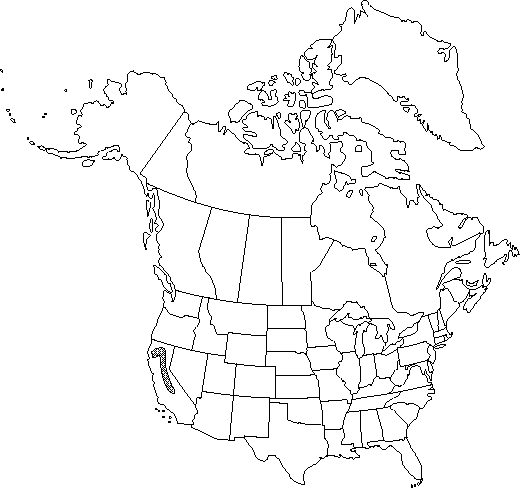Difference between revisions of "Asarum hartwegii"
Proc. Amer. Acad. Arts 10: 346. 1875.
FNA>Volume Importer |
imported>Volume Importer |
||
| Line 53: | Line 53: | ||
|publication year=1875 | |publication year=1875 | ||
|special status=Endemic;Illustrated | |special status=Endemic;Illustrated | ||
| − | |source xml=https:// | + | |source xml=https://bibilujan@bitbucket.org/aafc-mbb/fna-data-curation.git/src/bb6b7e3a7de7d3b7888a1ad48c7fd8f5c722d8d6/coarse_grained_fna_xml/V3/V3_729.xml |
|genus=Asarum | |genus=Asarum | ||
|species=Asarum hartwegii | |species=Asarum hartwegii | ||
Revision as of 00:04, 28 May 2020
Rhizomes erect or ascending, deeply buried, internodes 0.2-1.3 cm. Leaves: petiole 9-21 cm, sparsely crisped-hirsute. Leaf blade almost always variegate with white or silver along veins, cordate to cordate-reniform, 5.3-10 × 7-14 cm, apex rounded-acute to rounded; surfaces abaxially appressed-hirsute, usually sparsely so, adaxially glabrous or sparsely hirsute along veins, marginal hairs strongly curved toward apex. Flowers erect; peduncle 1-2. calyx tube cylindric, externally reddish, sometimes mottled red and green, hirsute, internally white with brownish purple stripes and white hairs (becoming brown with age); distal portion of sepal usually spreading at anthesis, sometimes reflexed or nearly erect, 12-27 mm, apex filiform-attenuate, abaxially reddish, hirsute, adaxially reddish, puberulent with crisped pale hairs; pollen sacs 2 mm, sterile tip of connective on inner stamens pale (sometimes dark in dried specimens), 3-5 mm, longer than pollen sacs. 2n = 26.
Phenology: Flowering spring–summer (Apr–Jul).
Habitat: Rocky slopes in dry conifer or oak forests
Elevation: 150-2200 m
Discussion
Asarum hartwegii was confused with A. marmoratum until very recently; reports of A. hartwegii from southern Oregon are errors for A. marmoratum (M. R. Mesler and K. L. Lu 1990).
Selected References
None.

